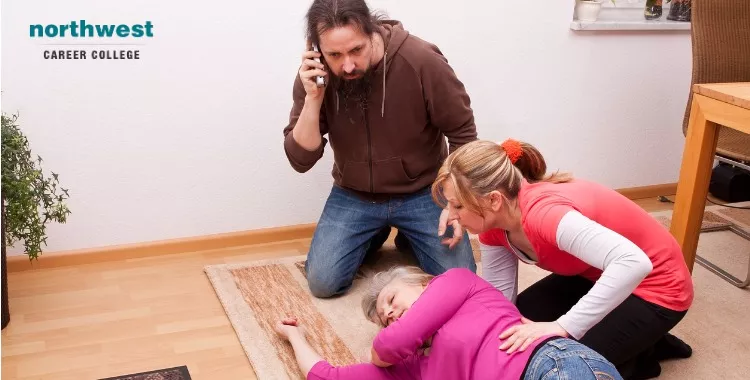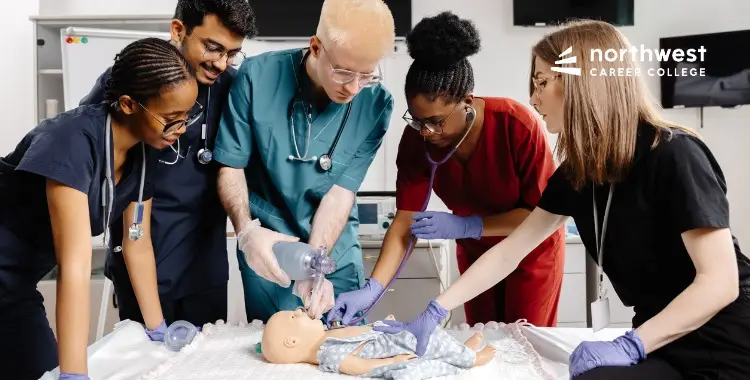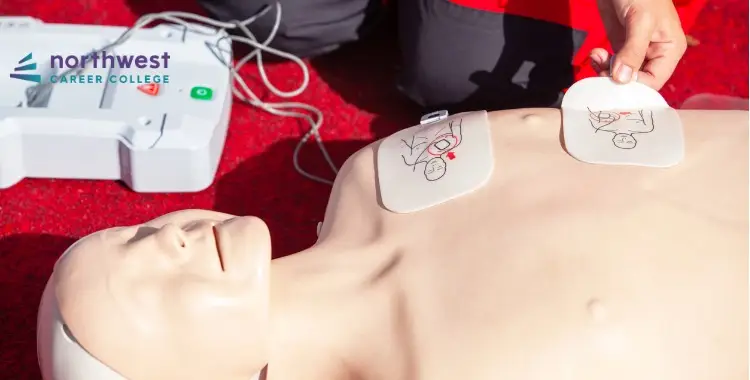What are the 7 steps of CPR in order?
- CPR
- February 25, 2025
- 11.2k views
- 6 min read

CPR is an acronym for “cardiopulmonary resuscitation.” It is a lifesaving technique that is used when someone’s heart stops beating. CPR can be performed on anyone, regardless of age or size.
The seven steps of CPR are as follows: check for Danger, call for help, check the Victim’s Airway, give Two Rescue Breaths, perform Chest Compressions, switch Roles with the Compressor (if available), and continue Compressions until Advanced Medical help arrives.
If you find yourself in a situation where someone needs CPR, don’t panic! Just follow these seven simple steps and you’ll be helping to save a life in no time.
Read More: How Does CPR Work?
Table of Contents
- What are the 7 steps of CPR in order?
- If the person is not breathing, start chest compressions by pushing down on their chest at a rate of 100-120 compressions per minute.
- If the person starts coughing or vomiting, turn them onto their side to prevent them from choking on their own vomit.
- Continue chest compressions until the person starts breathing on their own or emergency medical help arrives.
- Once the person is breathing, monitor their breathing and pulse until medical help arrives.
- Learn CPR today
What are the 7 steps of CPR in order?
The first step of CPR is to call 911
Knowing how to use CPR correctly can be life-saving in an emergency situation. It is vital to act quickly and take the right steps until professional help arrives. The first thing to do is call 911, as this will alert medical personnel, and they can instruct you on what to do next.
After calling 911, make sure you give the person CPR if needed – there are numerous techniques and it is important the correct one is used for maximum efficiency. Remember that time is of the essence with these situations, so don’t panic and take appropriate action as soon as safely possible.
The second step is to check the person’s breathing and pulse.
Performing CPR can be a life-saving skill. The second step after assessing a person’s condition is to check for their pulse and breathing. CPR is commonly executed in two steps: chest compressions and rescue breaths.
In order to administer CPR properly, you first need to check whether a conscious person is still breathing or has a pulse by feeling the side of their neck. If the person does not have any signs of breathing or circulation, CPR must be started right away. Knowing CPR is an incredibly valuable skill to save many lives, so it’s important for everyone to learn how it works.
Clear the person’s airways
Clear the person’s mouth of any obstructions that have been blocking their airway. Reaching into a person’s mouth to remove an obstruction can be dangerous, so it is important to be extremely careful and use special tools designed for this purpose.
If the person is not breathing, start chest compressions by pushing down on their chest at a rate of 100-120 compressions per minute.
CPR, or cardiopulmonary resuscitation, is a life-saving technique used when a person is not breathing. In such a situation, CPR must be performed immediately in order to have the best chance of reactivating the body’s natural processes.
To perform CPR, begin chest compressions. Push down on their chest at a rate of 100-120 compressions per minute; a metronome app can be used to ensure accuracy in timing. It is important to remember to count out loud as well – this will help you keep track of your compressions.
CPR done correctly can greatly improve the chances of survival and should never be hesitated over – it’s worth it to act now and learn CPR.
If the person starts coughing or vomiting, turn them onto their side to prevent them from choking on their own vomit.
Although CPR is an essential life-saving technique, it is important to remember that in certain scenarios, CPR should not be used.
One such instance is when someone starts vomiting or coughing as this can lead to them choking on their own vomit. In order to prevent them from doing so, turn the person onto their side, which would result in any vomit expelled by the person being directed away from the airway and out of their mouth.
Additionally, if CPR was still seemingly necessary due to the severity of the situation, it should only be performed when all swallowed material had been cleared from the airway through gentle back tapping with your fingers over their upper back.
Continue chest compressions until the person starts breathing on their own or emergency medical help arrives.
CPR is an invaluable skill that can prove lifesaving in medical emergencies. Knowing CPR means you are equipped with the knowledge to respond correctly and provide life-sustaining chest compressions until either the person starts breathing on their own or emergency medical help arrives.
CPR is a combination of both chest compressions and rescue breaths and knowing how to do them properly could make all the difference for someone in distress. Any attempt at CPR should continue until proper medical assistance arrives, so it’s important to ensure that your CPR certifications are always up-to-date.
Once the person is breathing, monitor their breathing and pulse until medical help arrives.
CPR is an important step to move through if someone is not breathing, as it helps keep vital oxygen moving through the body until medical help arrives.
Once the person begins to breathe on their own, it is essential to continually keep a close eye on the person’s breathing and pulse rate. CPR should be administered until medical help arrives, as monitoring their breathing and pulse can ensure that their condition does not take a turn for the worse or become unstable.
Even if CPR is performed initially, but further action needs to be taken, monitoring the patient can alert responders in time for them to administer any additional care needed and transport them for more intensive treatment.
Learn CPR today
Knowing CPR could save a life one day. It’s important to know the proper steps to take in order to help someone who is not breathing. If you see someone who is not breathing, the first thing you should do is call 911 and then check their pulse.
If they don’t have a pulse, then you need to start chest compressions by pushing down on their chest at a rate of 100-120 compressions per minute. If the person starts coughing or vomiting, roll them onto their side so they don’t choke on their own vomit. Once the person starts breathing again or medical help arrives, continue checking their pulse and monitor their breathing until professional help arrives.
Learn To Save Lives Yourself
Here at our trade school, we are committed to providing affordable, quality CPR Classes to the Las Vegas community.
We pride ourselves on being an American Heart Association (AHA) testing center and we offer Las Vegas CPR classes designed to fit your personal needs and professional schedule.
As part of our “student-focussed” approach to education, we also offer our CPR classes free of charge to all of our students. Call us today on (702) 403-1592 to book your CPR class and become qualified to save a life in just four hours!



